Year after year, NutraBio CEO Mark Glazier and his team have produced some of the industry’s most powerful products, incredible flavors, and brilliant formulas over the past few years. They’ve established themselves as an absolute powerhouse, cultivating a reputation that they’ve validated in the early aughts of 2020.

NutraBio is the industry leader in quality and transparency, and has been for quite some time.
One of NutraBio's characteristics that we admire most is its ability to be flexible. They don't just put all of their resources into a single product category. As a company that manufacturers their own supplements, they’ve built a team that can effectively formulate products that span virtually all supplemental needs.
Glazier has done this through two product "families" - the NutraBio "Sports Series", and their "single-ingredient" line. The former consists of products built with formulas that fill athletic needs, such as the newly-released New York Punch flavor of Intra Blast (an enhanced "sports drink" supplement), while the latter consists of products constructed to fill in dietary and supplemental gaps that you can stack together on your own!
Very recently, we covered the launch of NutraBio Maca, which solved a long-standing issue regarding poor-quality maca extracts on the market. Today's story is very similar, only with respect to milk thistle!
Higher-Potency Milk Thistle - the newest member of the NutraBio
NutraBio's Milk Thistle is the latest product to join the all-natural, science-backed health products that we’ve come to appreciate. Milk Thistle is most known for its incredible ability to maintain healthy liver function, ensuring that this important vital organ is running smoothly. However, just like with maca, not all milk thistle extracts are equal.
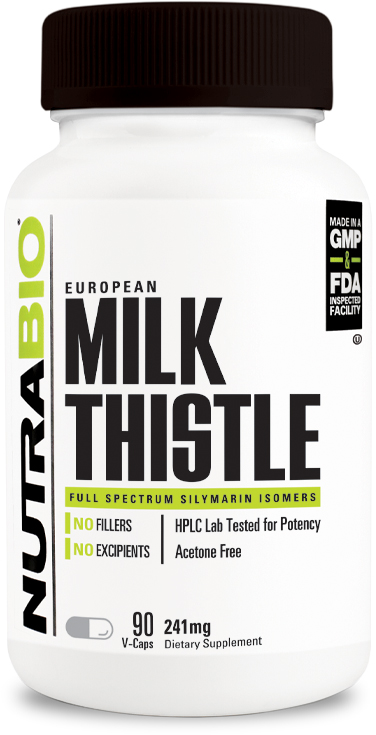
NutraBio Milk Thistle uses a European dry extract, *not* a nasty acetone solvent extract. This makes all the difference in the world!
If you’re searching for ways to keep the body healthy, making liver health a priority can do wonders for your overall well-being. But this isn’t just a milk thistle product. In true NutraBio fashion, this is perhaps the milk thistle product, as it uses the most intelligently extracted milk thistle we've read about.
The long story short
This post turned into a monster, so here's what you need to know:
-
Milk thistle has long been used for liver detoxification, especially in terms of damage from drugs (both prescription and illicit), alcohol, environmental toxins, and poor diet
-
Milk thistle's primary constituent is silymarin, which is actually a group of "flavonolignans", chiefly silibinin but there are several others.
-
Most other milk thistle supplements are solvent-extracted with acetone, which leaves harmful residue and destroys many of the constituent parts mentioned above
-
NutraBio's European Milk Thistle is instead dry-extracted, which is more costly, but leaves far more potent and bioactive flavonoids and other parts (it is "full spectrum" but still primarily silymarin).
-
The best studies for improving all kinds of liver damage come at 420mg silymarin per day, spread in three separate doses. NutraBio's Milk Thistle, taken as directed, meets or exceeds these studies.
Long story short? This ingredient is insanely effective as an adjunct therapy, and this extract is the real deal, tried-and-true form that comes with NutraBio's third-party lab testing.
In this post, we’re going to tell you everything we can find about the new NutraBio Milk Thistle, with a special emphasis on the science behind the ingredient and the qualities that make NutraBio’s version superior to the competition! Before we get started, make sure you’re subscribed to PricePlow's NutraBio news for awesome coupon-powered deals, news, reviews, and interviews from across the supplement industry!
NutraBio Milk Thistle – Deals and Price Drop Alerts
Get Price Alerts
No spam, no scams.
Disclosure: PricePlow relies on pricing from stores with which we have a business relationship. We work hard to keep pricing current, but you may find a better offer.
Posts are sponsored in part by the retailers and/or brands listed on this page.
This post will be a bit "out of order" - first, we'll talk about what's different with NutraBio's extract, assuming you know why you'd want to use milk thistle (long story short: liver support and antioxidant action). Then we'll get into milk thistle's research itself.
Why is NutraBio's Milk Thistle different?
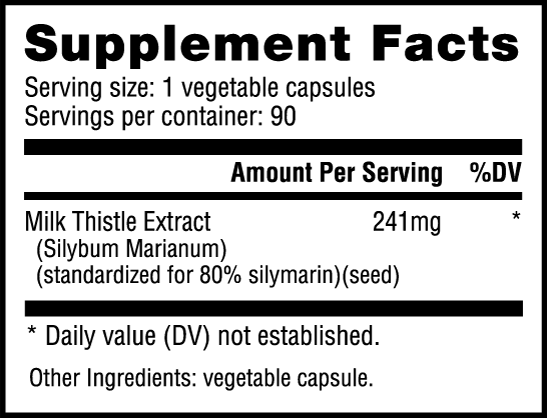
NutraBio Milk Thistle Ingredients: With 3 caps per day, you get well over the amount of silymarin needed to achieve 420mg/day.
The NutraBio difference? Milk thistle from Europe! The reason this is important is because European extracts are held to a higher extraction standard due to the governing bodies and laws in some European countries with regards to milk thistle.
No acetone extraction for a full spectrum!
Typically, milk thistle is acetone-extracted, which will get one active ingredient group in silymarin (which you'll see on other supplement labels), but acetone -- the same solvent used in nail polish remover -- will destroy the rest of the spectrum, and leave a harmful and volatile residue.
Instead, European extracts are carefully dry-processed, which is more costly and time-consuming, but keeps the full spectrum of constituents - closer or identical to many of the clinical studies cited below. Milk thistle is more than just silymarin!
But just because it's "full spectrum" doesn't mean it's weak: NutraBio's Milk Thistle still has a high amount of silymarin, the primary active ingredient. And since NutraBio publishes 3rd-party lab testing on all supplements (on top of their own high-performance liquid chromatography [HPLC] testing), you know purity is ensured.
Exceeding the 420mg per day research
Below, you'll see many research studies citing 140mg per day through 420mg per day for the more aggressive treatments. With NutraBio's standardization, you're getting that much in active ingredients (at one or three capsules per day, depending on what study you compare it to), but also get the added benefits of the other constituents kept from the dry, acetone-free extract.
This brings a "best of all worlds", where you have a product that goes above and beyond what several studies demonstrate.
What is Milk Thistle?
Silybum marianum, otherwise known as the milk thistle plant, has been used for medicinal purposes in both Ayurvedic and Traditional Chinese Medicine,[1] with its usage having spanned across Europe and Eastern Europe for centuries. This prickly purple plant gets its name from its appearance - silybum refers to it being an edible thistle, while marianum references the thin white stripes that lie on the surface of its leaves.[2]
Silymarin = silibinin, silydianin, silychristin, and much more
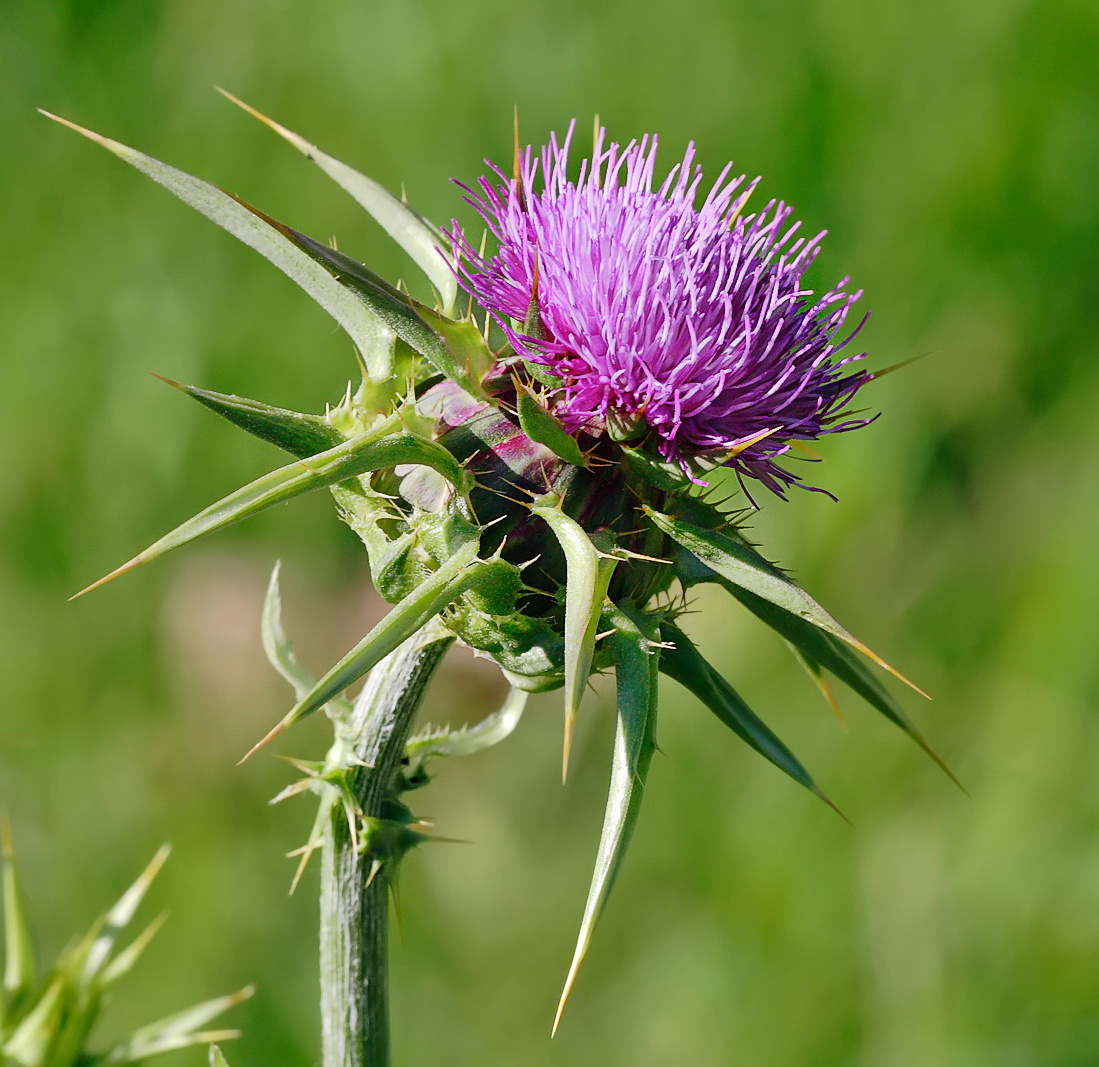
Silybum Marianum, better known as Milk Thistle, has a tremendous amount of research for liver detoxification. Image courtesy Wikimedia Commons.
The extract of the milk thistle plant is quite useful, and this is one of those times when ayurvedic and traditional Chinese medicine got it 100% right. The extract derives its powers from main three flavonolignans (silibinin, silydianin, and silychristin) which, together, form a compound known as silymarin.[2] In addition, there are also flavonolignans like isosilybin, isosilichristin, dehydrosilibin, and dehydrosilichristin.
Many think of silymarin as a single compound, but as you can see it's actually a group of these compounds, so keep that in mind. Once again, many of those other compounds can be destroyed by acetone extracts, which is why NutraBio's dry extract is so important.
Silibinin doing the heaviest lifting?
Silymarin, as we’ll soon see, is quite strong, with various medicinal properties - and many of them are usually credited to silibinin - of the three bioactives that form silymarin, silibinin is typically around 50% to 70% of the total makeup![2] A typical milk thistle extract is around 60% to 80% silymarin, with the remainder coming from fatty acids natural to the plant.[5]
Despite this biological knowledge not being available until modern science became available, the anecdotal use of milk thistle falls in line with what science backs up. Historically, milk thistle has been used to promote liver health in virtually any way possible. Dubbed a "liver tonic", this substance is utilized to ward off various chemicals and toxins that can be damaging to the liver.[2] Having displayed its prowess in practice, it was only a matter of time before scientists dug into the ingredient in the hopes of validating such benefits!
How does Milk Thistle work?
While research is still investigating the exact mechanisms that make this protective interaction possible, there have been some possible reasons found in studies utilizing mice. In 1986, scientists found that the injection of silibinin in mice that were missing a piece of their liver spurned protein synthesis in their livers.[6] This and other hepatoprotective properties that have been seen in mice studies have led scientists to hypothesize that milk thistle stimulates RNA and polymerase I activation,[2,7] though most studies state that further research is needed to confirm or deny this educated guess.
That being said, researchers haven’t let this lack of understanding the full picture keep them from testing the effects of milk thistle in humans. Plenty of people could benefit from the introduction of a liver aid in their lives, and with such promising results in non-human studies, testing the ingredient in human experiments was a logical next step!
Human research behind milk thistle
Liver disease is a condition that can either be genetically inherited or acquired over years of damage, often caused by things such as alcohol use, obesity, drug abuse, too much linoleic acid in the diet, fructose overconsumption, or often a combination of the above. It is an incredibly serious ailment that affects various individuals and kills many each year.
While there are a number of therapeutic practices that can potentially help alleviate symptoms, and removal of the trigger is typically the best course of action, scientists are continuously looking for things that can safely help damper things like cirrhosis and fatty build-up. Research has found that milk thistle may be a worthy adjunct to proper treatment, showing promise when tested in individuals with a damaged liver.
-
Normalizing drug-induced liver disease
Milk thistle's modern research began with drug-induced damage to the liver, namely to rescue livers from the damage caused by long-term psychotropic drug use.
-
Saba 1974: Low-dose silymarin works over time
How it works: Silymarin raises the activity of RNA Polymerase I (polymerase A), boosting the mRNA synthesis rate in liver cells.[4,6]
Modern human-based research actually began in 1976 in Italy, where Saba et al ran a double-blind, placebo-controlled trial testing the efficacy of silymarin on subjects who had liver damage due to psychotropic drugs (prescribed for their schizophrenia). 37 patients on therapy with psychotropic drugs (chlorpromazine and/or benzodiazepine) were treated orally with 70mg silymarin (or placebo) for 6 months.[8]
Subjects in the silymarin group had normalized ALT, AST, bilrubin, and prothrombin levels within 2-6 months, while the control group did not.
An English translation cannot be found for this study, but it is briefly discussed by the World Health Organization.[9]
-
Palasciano 1994: High-dose silymarin for psychotropic drug treatment
Other trials on drug-induced disease have yielded similar results, albeit with higher doses. 60 subjects on long-term therapy with psychotropic drugs (butyrophenones or phenothiazines) were given 800mg silymarin (400mg twice daily) or placebo daily for 90 days.[10]
Subjects in the silymarin group had improved liver function and reduced lipoperoxidative hepatic damage, which was determined by serum malondialdehyde levels, which is the end product of polyunsaturated fatty acid oxidation.[9,10]
-
-
Improvement of Liver Function from Alcohol Injury
In the past, most liver damage was due to alcohol abuse, and thus, there's a ton of research based upon helping the symptoms of alcohlic liver cirrhosis. It's very important to note that without cessation of drinking, nearly all alcoholics have poor outcomes. Milk thistle may help the liver recover and may prolong life, but it is certainly no cure.
-
Di Mario 1981: 420mg silymarin vs. alcohol-induced liver disease
Alcohol-based recovery began to take off in 1981 when Germany-based researchers Di Mario et al tested 43 patients with alcohol-induced liver disease for two months in a randomized double-blind, placebo-controlled trial using 420mg silymarin per day. Of the patients tested, ten had steatosis, 10 had chronic hepatitis, and 9 have liver cirrhosis.[11]
Looking for a better way to recover from drinking. We've found that NAC (N-Acetyl Cysteine) taken both before and after alcohol improves hangover status tremendously. Why? It increases glutathione production. See NutraBio NAC on PricePlow.
The researchers found that milk thistle yielded a statistically significant reduction in alanine transaminase (ALT), aspartate transaminase (AST), bilirubin, and prothrombin in the blood. On top of that, there were symptoms such as weakness, anorexia, and nausea that all improved.[11]
Like Saba's research discussed above, note that we cannot find an English translation for the study, but it is discussed in detail in other related research.[12] However, there is plenty of other research on milk thistle / silymarin in the fight against cirrhosis and alcohol-based disease:
-
Fehér 1989: hepatoprotective activity against alcohol-induced cirrhosis
In 1989, Fehér et al tested 36 patients with alcohol-induced liver cirrhosis using 420mg silymarin (140mg 3x/day) or placebo in a double-blinded trial.[13] The subjects entered with an average of 8 years of chronic alcohol consumption.
Those in the silymarin group saw significant reductions in AST, ALT, gamma-glutamyl transferase activity (GGT or γ-GT), and procollagen III peptide (P-III-P) levels compared to placebo.
-
Ferenci 1989: Increased Survival from Cirrhosis
Not only does milk thistle and silymarin improve liver enzyme levels in alcoholics, it improves overall survival! In a very large trial lasting over two years, Ferenci et al recruited 170 patients with liver cirrhosis, and split them into several groups. Many had alcohol-induced cirrhosis, but many did not. They were given 420mg silymarin (140mg 3x/day) or placebo.[14]
After two years, silymarin's survival rate was 82% compared to 68% for placebo. After four years, silymarin's survival rate was 58% compared to 39% for placebo.
Noteworthy is that the treatment worked best for those with alcoholic cirrhosis, but in the conclusion, we'll give some diet-based insights for those with NAFLD.
-
Parés 1998: Improved Survival on Cirrhosis
Another two year alcoholic cirrhosis survival study was published in 1998 by Parés et al, who tested 450mg silymarin (150mg 3x/day) on 57 patients against placebo in 68 patients.[15]
The results of this study were quite illuminating, because the silymarin group had less liver-related mortality (9.4% in silymarin vs. 14.6% in placebo), but overall mortality was very similar in both groups (15.6% vs. 15.7%, respectively).
This demonstrates that silymarin can help with liver protection, but cannot be the only treatment for those with alcoholism, who suffer from a severe mental condition and need a full range of support.
-
Velussi, 1997: Diabetic Patients with Alcoholic Cirrhosis
In 1997, Velussi et al ran a large study on 60 diabetic patients who had liver cirrhosis and were also using insulin.[16] 30 subjects were given 600mg silymarin daily and 30 subjects were on placebo.
After just three months of treatment, the silymarin group had improved fasting and average blood sugar and HbA1c levels, lower insulin levels (and lower insulin requirements), improved C-peptide levels, and better malondialdehyde (MDA) levels.
Let's be very clear here: the milk thistle group's numbers were far better than the untreated group's, but these are still terrible numbers.[16] Alongside milk thistle, diabetics need to go on a low-carb diet and stop eating all processed foods, especially those that include processed "vegetable oils". Also consider berberine.
The researchers hypothesized that silymarin may reduce the lipoperoxidation of cell membranes and assist with insulin resistance.
It's important to note that both diabetes and alcoholism together are a dual threat to the liver, as diabetes can be considered "energy toxicity", especially in the liver. This is all very preventable with reasonable lifestyle changes, but silymarin can assist.
-
-
General liver toxicity cohort studies
In the 1990s, there were three very large studies funded by the European milk thistle industry that were performed on a cohort of individuals with various types of liver damage.[17-19] Unfortunately, they haven't been translated into English, but the synopses are provided below:
-
Albrecht 1992 (industry-funded study on Legalon)
The milk thistle industry got going when Legalon brand European Milk Thistle was used in a massive study on 2637 patients with various forms of liver damage. 56% had fatty liver and 19% had hepatitis or cirrhosis, while 22% was unknown (possibly from diet).[19]
In two months at 210-420mg/day of silymarin,
- Subjective symptoms disappeared in 50-56% of patients and improved in another 10-23%
- Liver enlargement normalized in 27% of patients who had slight to moderate enlargement, and improved in 56% of patients with severe enlargement
- Transaminases and GTT were reduced by 34-46% and within normal range in 50% by the end of the treatment[19]
Two similar trials followed:
-
Grüngreiff 1995 (industry-funded study on Legalon)
In 1995, Grüngreiff et al published a massive study on 975 patients with toxic liver damage due to various causes (63% alcohol, 12% drugs, 3% industrial chemicals, and 28% unknown or diet).[17] 58% of patients had fatty liver, 15% had hepatitis, and 22% had cirrhosis.
Over the course of 12 weeks, 280-420mg silymarin was given daily. The results were as incredible (or, "as expected" at this point in the research):
- Lab values of AST, ALT, GTT decreased by a range of 36-46% and bilirubin levels normalized
- Subjective symptoms improved or disappeared per 62-78% of the patients
- The physicians noted that 86% of the patients clearly improved or even became symptom-free (and 82% of the patients self-judged this themselves)
-
Schuppan 1998: 998 patients
In 1998, Schuppan performed a major study funded by industry that involved 998 patients with chronic liver disease.[18] 61% were due to alcohol, 12% due to Hepatitis, 8% to drugs, 2% to industrial chemicals, and 21% unknown or diet. 58% had fatty liver, 15% had toxic hepatitis, and 22% had cirrhosis. The trial lasted three months and 140mg, 280mg, and 420mg per day were tested.
After looking at all of this research, we can conclude that European Milk Thistle from dry-extract is the real deal for those who need the support.
The groups groups receiving 280mg and 420mg yielded the clinically significant results, with the following:
- Subjective symptoms decreased from 20.1% to 13.9% (averaged across all patients)
- AST, ALT, GTT, AP, bilirubin, and MCV normalized in 11-42% of patients.
- P-III-P increased in 35% of patients and normalized in 47% of patients with steatosis, in 41% with hepatitis, and 26% with cirrhosis
-
-
Protection from Environmental Toxins
Many with liver disease aren't poisoned by what they eat, drink, or inject, but from damage due to environmental toxin exposure.
In 1988, Szilárd et al published an interesting trial on 49 patients with liver damage due to toluene and/or xylene vapor damage. No alcoholics were included in the study. For one month, 420mg silymarin was given (140mg 3x/day) to 30 subjects, while 19 received no treatment.[20]
The silymarin group had the following changes:[20]
- Reduced AST, ALT, and GTT levels
- Lymphocytosis decreased and platelet counts increased
- Appetite increased and headaches disappeared
-
Meta analyses on liver cancer and non-alcoholic fatty liver disease
Similar story with Maca: With the help of Lepidamax, NutraBio Maca is back!
Not all liver damage is due to drug and/or alcohol abuse, however. We argue that much of the recent uptick in NAFLD is due to diet, as discussed below.
A thorough review from 2016 found that milk thistle extract improved liver function in people with either liver disease or liver cancer.[21]
Another meta-analysis from 2017 found similar results, seeing significant improvements in biochemical metrics in individuals with non-alcoholic fatty liver disease.[22]
Importantly, however, this analysis came across extreme variability in results, with the degree of effects seen ranging from extremely beneficial to non-existent. They suggested that though more research is necessary to fully validate the potency of milk thistle in regards to liver health, there are direct interactions that may indicate potential therapeutic use.[22]
-
Other potential uses
Though most of the research on milk thistle focuses on its interaction with the liver, there are some other potential benefits that warrant mentioning:
- It looks like the organ-protecting effects may go further than the liver - animal studies have found that milk thistle may prevent oxidative damage in brain cells, which can help slow age-related cognitive decline.[23,24]
- Milk thistle has been shown to stimulate bone growth and fortification in animal studies,[25] suggesting potential use in those with osteoporosis.
- Thanks to its anti-inflammatory effects, one study from 2012 found that 8 weeks of milk thistle supplementation reduced skin acne in humans.[26]
The most trusted ashwagandha (KSM-66) from our most-trusted brand (NutraBio) -- A match made in heaven!
While these benefits are worth noting, they share something in common that tempers expectations a tad - these effects have really only been seen in animal studies. That being said, we’d love to see more research focused on these interactions, as it would only add to the list of what milk thistle could potentially offer!
Milk thistle is an adjunct therapy
The phrase "potential therapeutic use" up above is key here - milk thistle is best used as an adjunct to keeping a healthy liver, not the "be all, end all". As is always the case in the supplement industry, there is no magic fix to correct whatever a given supplement is meant to help.
In the case of milk thistle, one needs to ensure they’re doing everything else they can to keep a healthy liver - this means living a healthy lifestyle, making smart nutritional and recreational choices more often than not. Adding milk thistle into your daily regimen surely won’t fix your liver entirely, but it can certainly help promote proper functioning - especially if you remove the insult to your liver (whether it's drugs, processed food / fats, alcohol, or other harmful environmental toxins)!
NutraBio Milk Thistle Dosage: 3x/day to match research
If you didn't notice by the studies above, the majority of successful human-based data uses 140mg taken three times a day, or 420mg total silymarin. While each individual capsule contains 241mg of active ingredient, you'd think that two capsules per day would be enough (and it might be), but recall that this is a standardized product, so not all 241mg is silymarin.
To follow with the best research, this product is designed to be taken three times per day. With that dose, you're matching and then exceeding the 420mg per day of total silymarin. This gives you a one month supply with a bottle, too.
Higher dosages may be more effective, there are some studies that go higher, but remember, this is adjunct therapy to be used alongside your doctor's protocol.
Who could benefit from NutraBio Milk Thistle?
Reading between the lines, for the athletes out there, it's obviously something worth trying for those who use more "aggressive" types of supplements the industry has to offer. We’ve typically seen milk thistle used in formulas designed for post-cycle therapy (PCT), as its liver-aiding benefits are of heightened importance in those transitioning off of an anabolic muscle-building phase.
However, there's one other factor to watch for, and it's one that doesn't get enough attention:
Liver damage from processed foods / fats high in linoleic acid and other omega-6 polyunsaturated fatty acids
Over the past couple of decades, we have seen a massive onslaught of NAFLD, or Non-Alcoholic Fatty Liver Disease. Long ago, it was such a rare condition that doctors believed their patients were lying. We now know that's false, as diet can cause liver damage.
Things have gotten so ridiculous that even children are coming down with NAFLD![27]
Many like to blame the prevalence of fructose for increased NAFLD,[28] and mechanistically that makes sense, but it doesn't pass the "sniff" test since high fructose corn syrup and sugar consumption are going down yet NAFLD is still rising and in younger and younger patients.

HNE, or 4-Hydroxynonenal, is the real killer, and it comes from eating too much linoleic acid.[30] We intend to prove this.
Instead, we have another theory: processed fats. Specifically linoleic acid, an omega-6 polyunsaturated fatty acid which is brought to us by "vegetable oils" (better known as "seed oils").
While an "essential" fatty acid, linoleic is also far too abundant in our highly-processed food supply, and too much of it leads to wildly inflammatory compounds such as arachidonic acid, HNE, HETE, and HODE.[29,30]
Although there's no direct connection "proven" in research, consider this:
A pilot study giving NAFLD patients a diet low in omega-6 fats (and thus low linoleic acid) had a 100% cure rate![31] And this was a high-carb diet, for all those who continue harping on fructose and carbs.
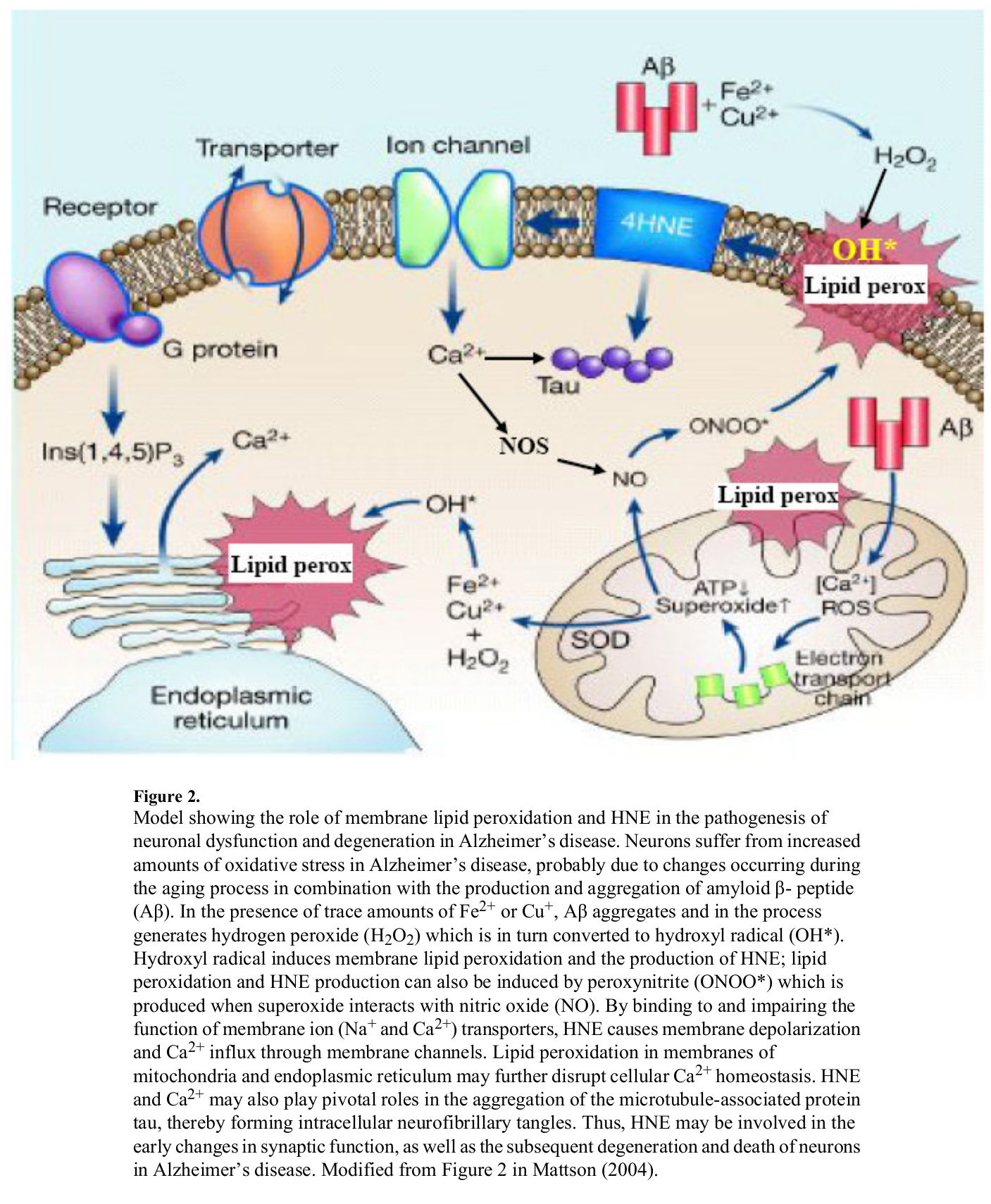
The same way neuron lipids get peroxidized, we surmise that liver cells face a similar fate from too much Linoleic Acid / Arachidonic Acid -> HNE[30]
Meanwhile, the omega-6 fatty acids are what have become more prevalent in society as our obesity crisis and collective liver disease have skyrocketed.
While this isn't definitive proof, but it demonstrates that NAFLD, a disease that was once said to be "incurable", is quite easily cured for many: limit alcohol consumption and stop eating seed oils like canola oil, corn oil, soybean oil, sunflower oil, safflower oil, cottonseed oil, and linseed oil! These contribute to the vast majority of our omega-6 fatty acids and linoleic acid, and ever since we began eating all of them instead of saturated fat, literally everything has gone wrong for our collective health.
Combining such processed foods (which nearly always have these processed oils) with alcohol, drugs, or environmental toxins is a recipe for the metabolic disaster our society is currently facing.
Something must be done now. And while you're on the way to recovery by removing this poison, your liver may greatly improve with some added acetone-free, European Milk Thistle.
Conclusion
If you’re familiar with NutraBio, then you’re certainly aware of their "No Compromise" mantra that embodies how they conduct their business. Every NutraBio product consists of the highest-quality ingredients, are efficaciously dosed, and are third-party lab tested to ensure their purity. They’re so confident in the quality of their products that you can even see the lab tests of the batch in which your supplement was produced!

With both 3rd-party testing and a European dry extract, there's no Milk Thistle supplement we trust more
NutraBio has started off the new decade on a tear, coming out of the gates hot with a variety of products so far. They’ve grown their "Ice Cream Parlor" series of Classic Whey flavors, bringing the Orange Dream and Pistachio Delight flavors into the fold. They also expanded what was once a limited edition flavor into a widely-available one, making Intra Blast New York Punch available to the masses.
2020: The year of fixing industry wrongs
The brand has followed all of these massive achievements with a new single-ingredient introduction, NutraBio Maca, which follows a similar story as this European Milk Thistle (only the maca is from Peru). As you can see, NutraBio has kept busy in 2020, and still have their sights set on doing more!
NutraBio Milk Thistle is the latest release for the influential brand, and it delivers everything you’d expect out of a single-ingredient NutraBio product - a high-quality source ingredient, an effective dose, and the purity and potency Mark Glazier and his team promise with everything the company offers. Milk Thistle brings a bit of liver support to the ever-growing NutraBio product family, something that can benefit a lot of people. This product is designed to help keep toxins away from this incredibly vital organ, while also helping to promote proper functioning.
NutraBio’s single-ingredient products are methodically constructed to deliver one ingredient and all of its science-supported benefits, and time and time again, they do just that. Milk Thistle does just that, making it a welcome addition to the NutraBio brand!
NutraBio Milk Thistle – Deals and Price Drop Alerts
Get Price Alerts
No spam, no scams.
Disclosure: PricePlow relies on pricing from stores with which we have a business relationship. We work hard to keep pricing current, but you may find a better offer.
Posts are sponsored in part by the retailers and/or brands listed on this page.
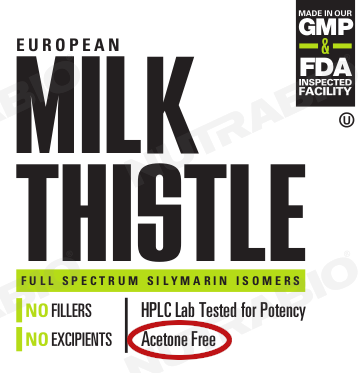
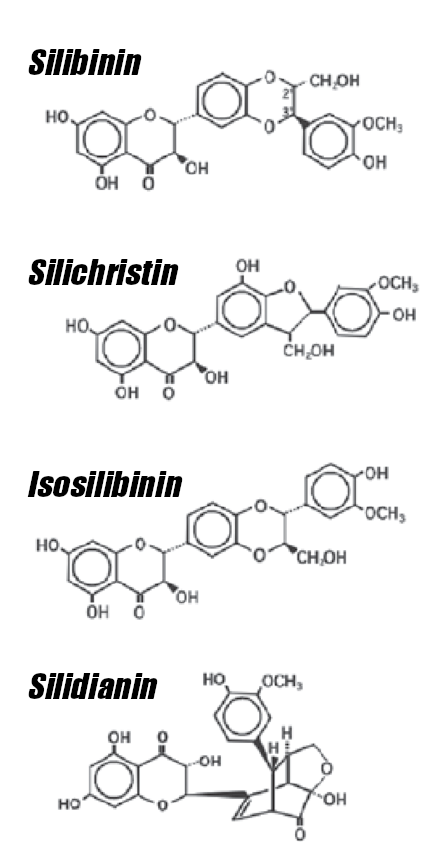
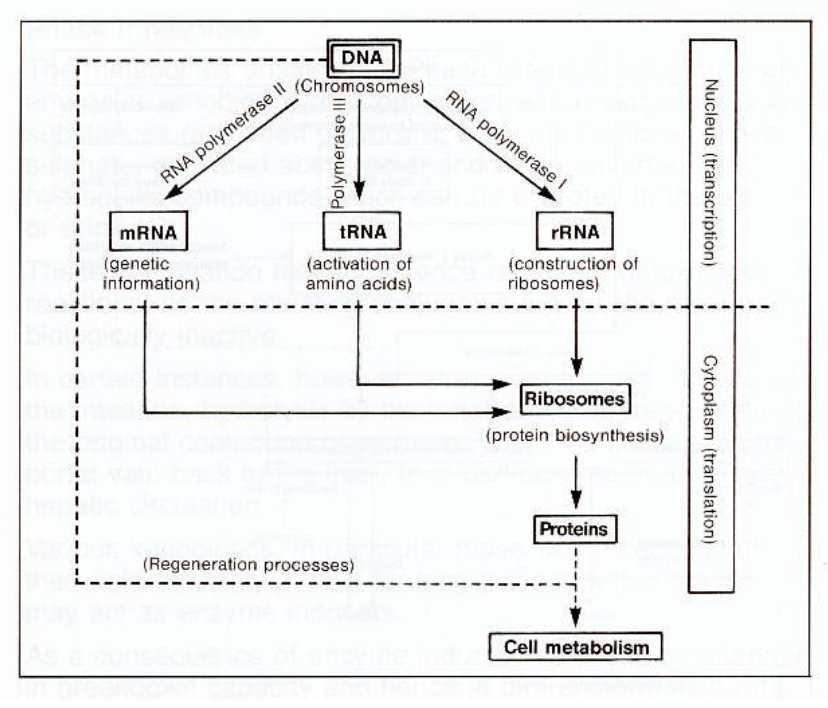
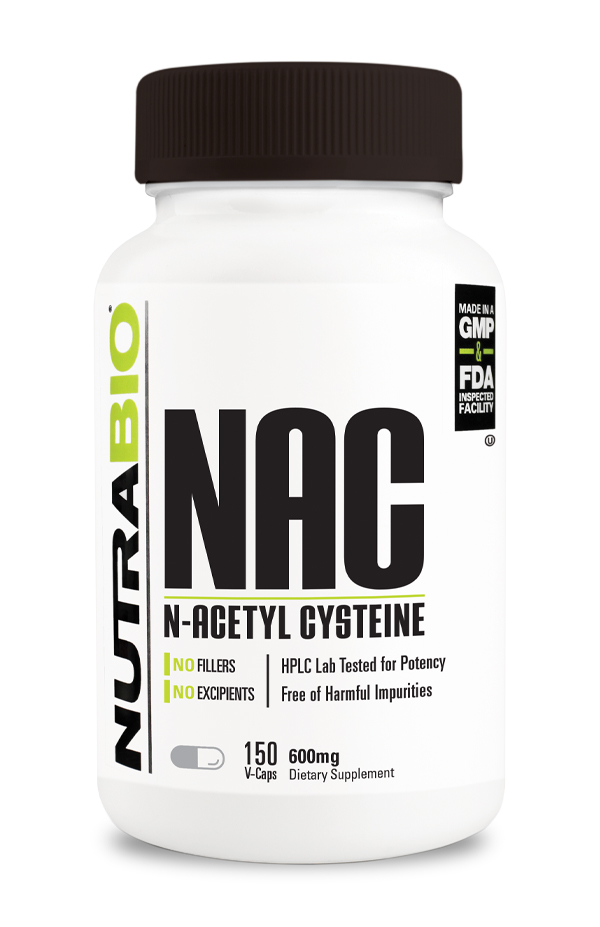
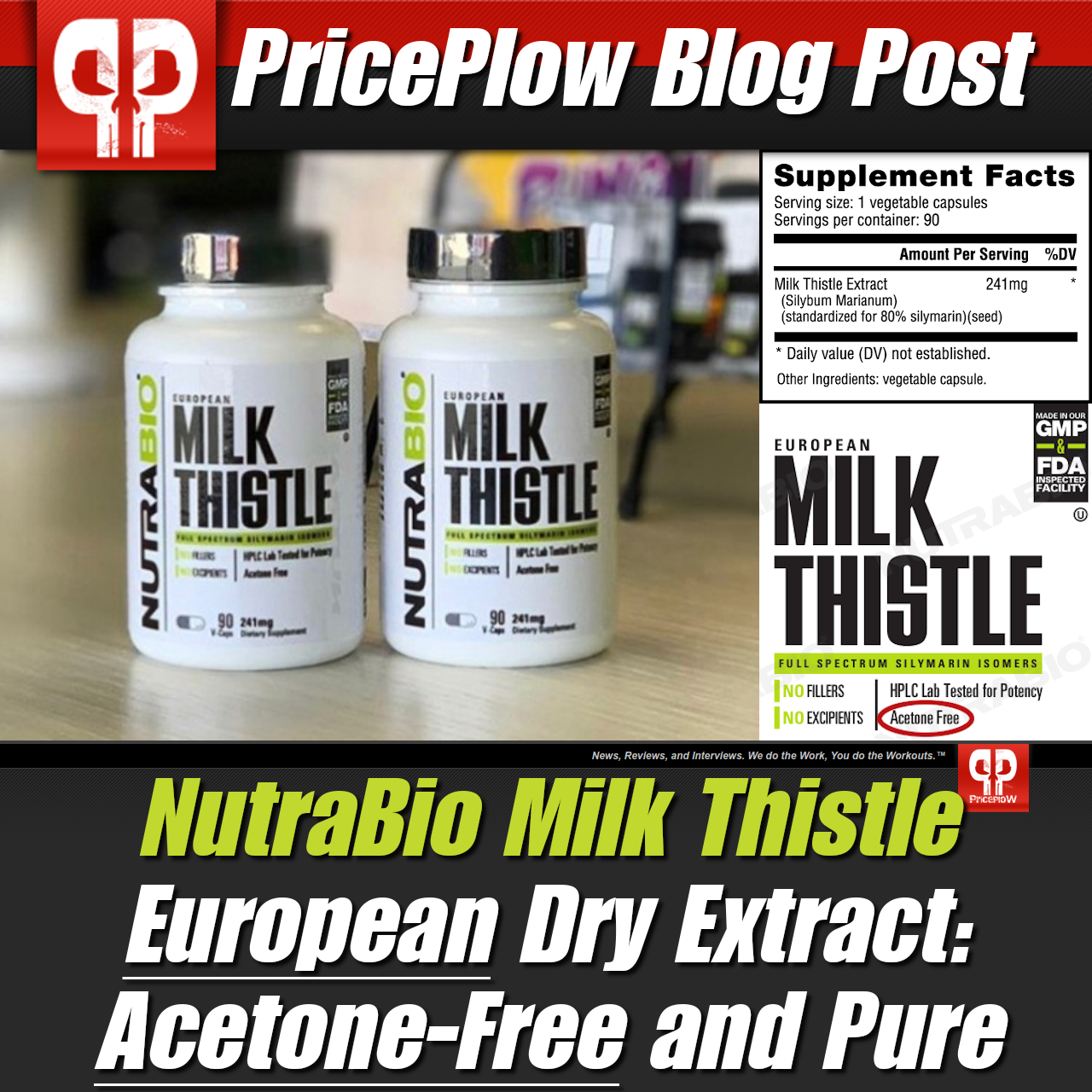
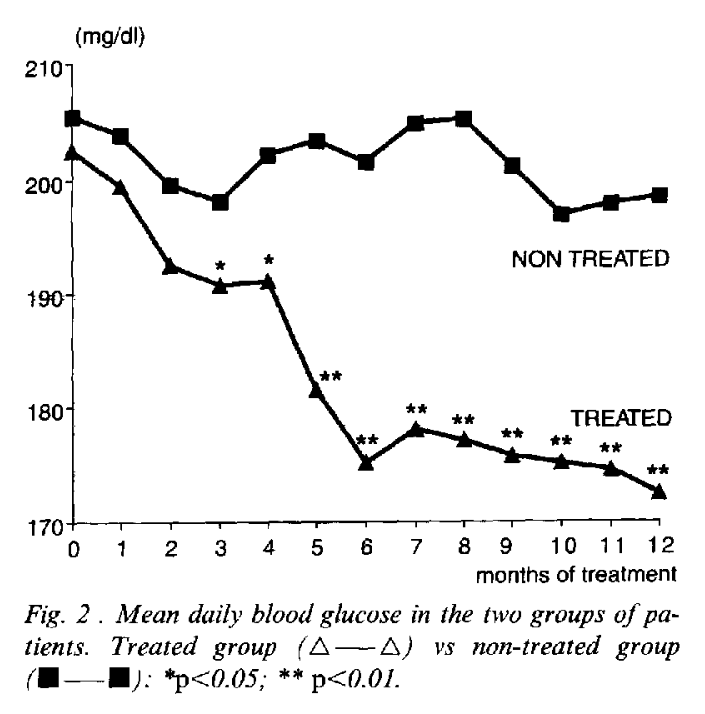
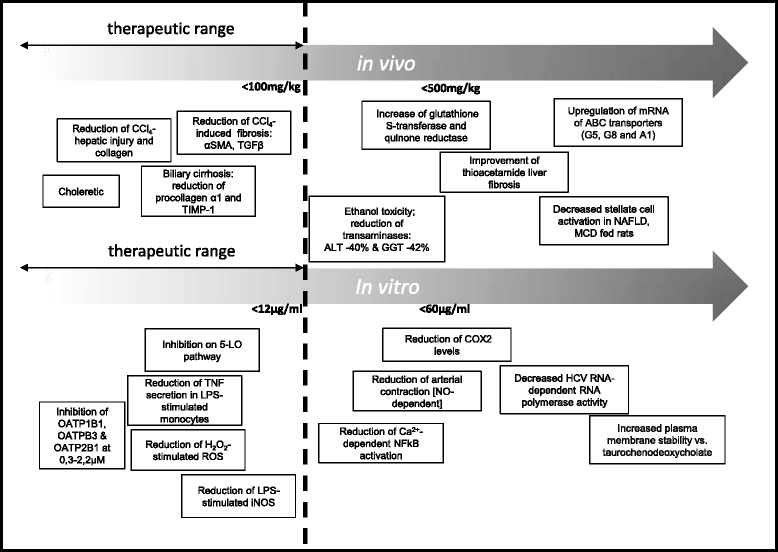

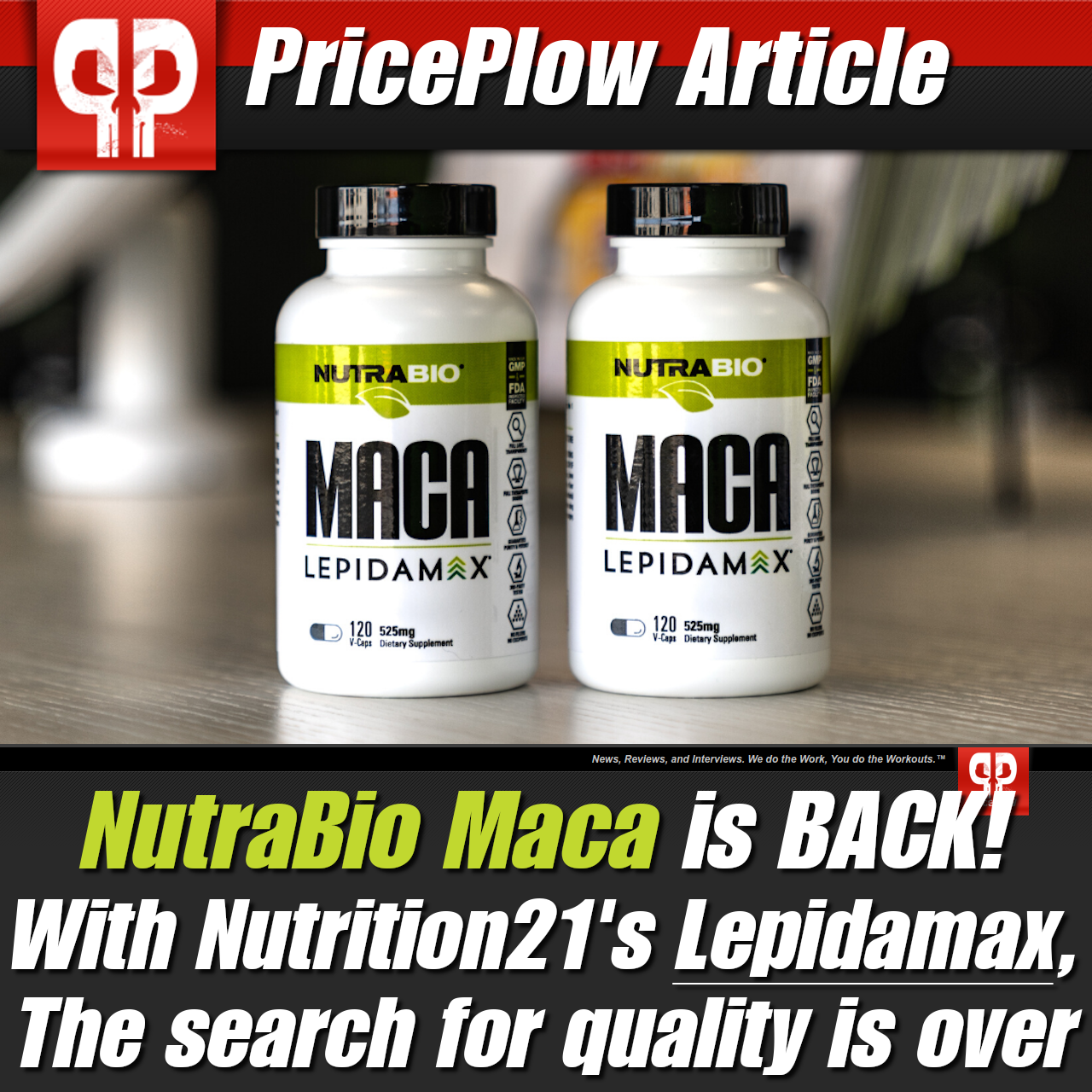
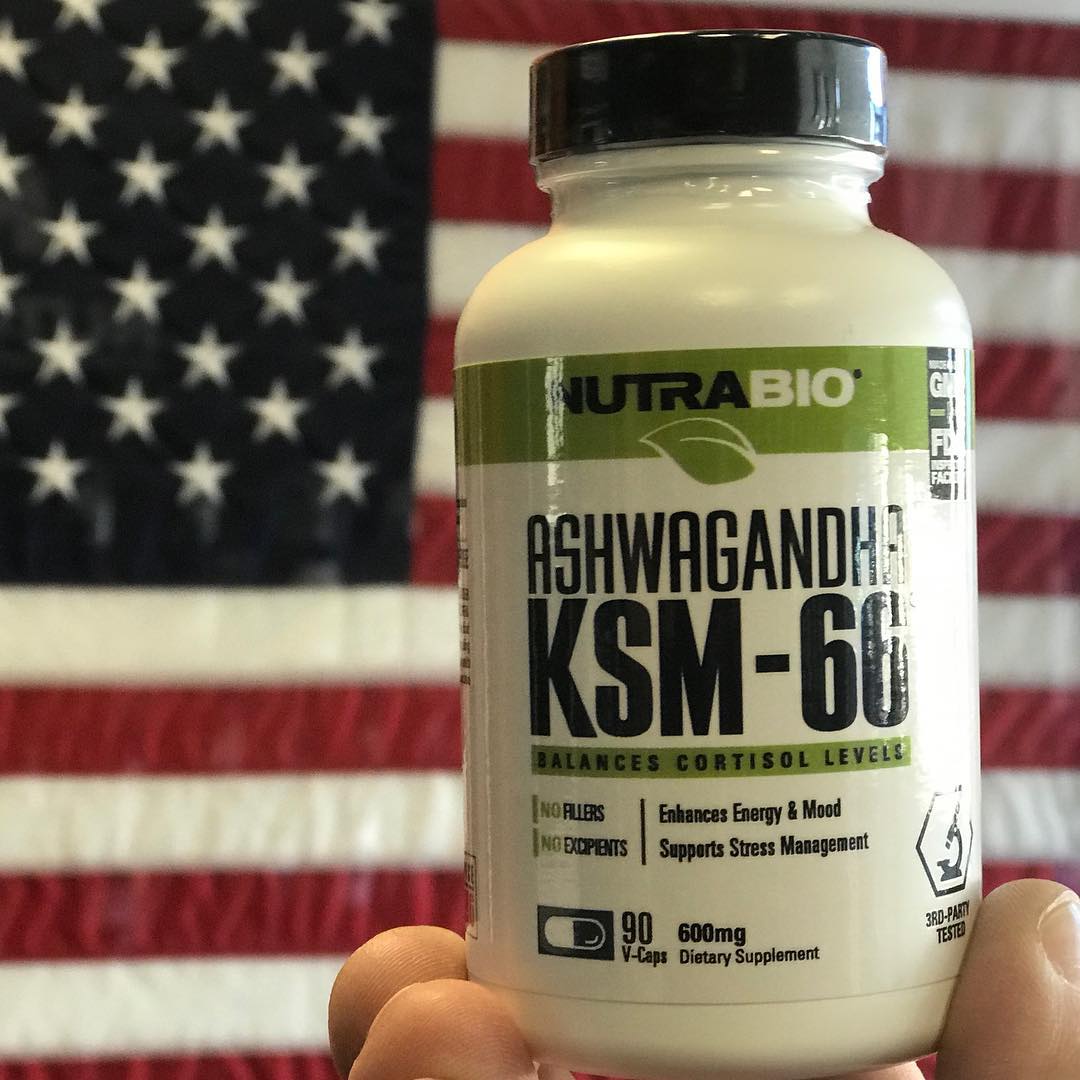



Comments and Discussion (Powered by the PricePlow Forum)